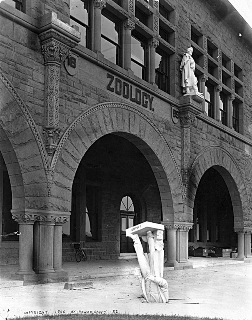 Nina Morgan* discovers how an earthquake put Louis Agassiz's nose severely out of joint.
Nina Morgan* discovers how an earthquake put Louis Agassiz's nose severely out of joint.
As a geologist and palaeontologist Swiss-born Jean Louis Rodolphe Agassiz (1807-1873) began making waves early in his career. At the age of just 26 he published the first part of Recherches sur les poissons fossils - a five-volume opus magnum which appeared at intervals from 1833-43). Then in 1840, aged just 33 and working with William Buckland (1784-1856) first Reader in Geology at Oxford University, he discovered convincing evidence of ancient glaciers in Scotland.
BOSTON
In 1846, thanks to a grant from Frederick William IV, the King of Prussia, Agassiz crossed the Atlantic to take up an invitation to give a course of lectures at the Lowell Institute in Boston. These proved very popular, and with offers of finane flowing in, he decided to stay on to investigate the geology of North America. He remained in the United States for the rest of his life, and became an important and inspirational figure in the American scientific community.
Among his admirers was David Starr Jordan (1851 - 1931), an ichthyologist and the first president of Stanford University in California. As a mark of respect, Jordan must have been influential in the commissioning a marble statue of Agassiz to join those honouring luminaries such as Johann Gutenberg, Benjamin Franklin, and Alexander von Humboldt on the second story of the north wall of what was then the Zoology Building.
But Mother Nature had other ideas, and the Earth turned out to be Agassiz's undoing. When the San Francisco earthquake struck in 1906, many of the buildings on the Stanford campus (c. 50km to the south), were also damaged. Among the casualties was Agassiz's statue, which fell head-first to the ground below.
According to one contemporary account "...the statue fell foremost into the ground (right through a cement walk) up to his shoulders, and still sticks there, legs in the air and his hand held out gracefully. People came running from the quad with such sober faces, but when they saw him they couldn't help laughing, and one fellow went up and shook hands with him." Another account described "...Agassiz's natural instinct that when the earthquake came he decided to stick his head underground to find out what was going on in the earth below and with his finger pointing saying, 'Hark! Listen!'" According to Steven Jay Gould, others were heard to say “I liked Agassiz better in the abstract than in the concrete”, though this may be apocryphal.
Amazingly, although his statue was imbedded to the shoulder, the only damage was to its nose. This was soon reunited with the rest, and Agassiz's statue, fully restored, was returned to its original position. Today it stands securely mounted on a plinth, on one side of the entry to Stanford’s Jordan Hall. Opposite him stands his friend and mentor, the Prussian geographer Alexander von Humboldt.
Acknowledgement
Sources for this vignette include the Wikipedia entry for Louis Agassiz, and the article Earthquake Impacts on Prestige, Memorial Arch & Agassiz Statue, available at:
http://quake06.stanford.edu/centennial/tour/stop3.html
- If the past is the key to your present interests, why not join the History of Geology Group (HOFF). For more information and to read the latest HOGG Newsletter, visit the HOGG website at: www.historyofgeologygroup.co.uk, where you'll also find abstracts for the talks and posters presented at the Conference on Geological Collectors and Collecting, April 2011 available free to download as a pdf file.
*Nina Morgan is a geologist and science writer based near Oxford.